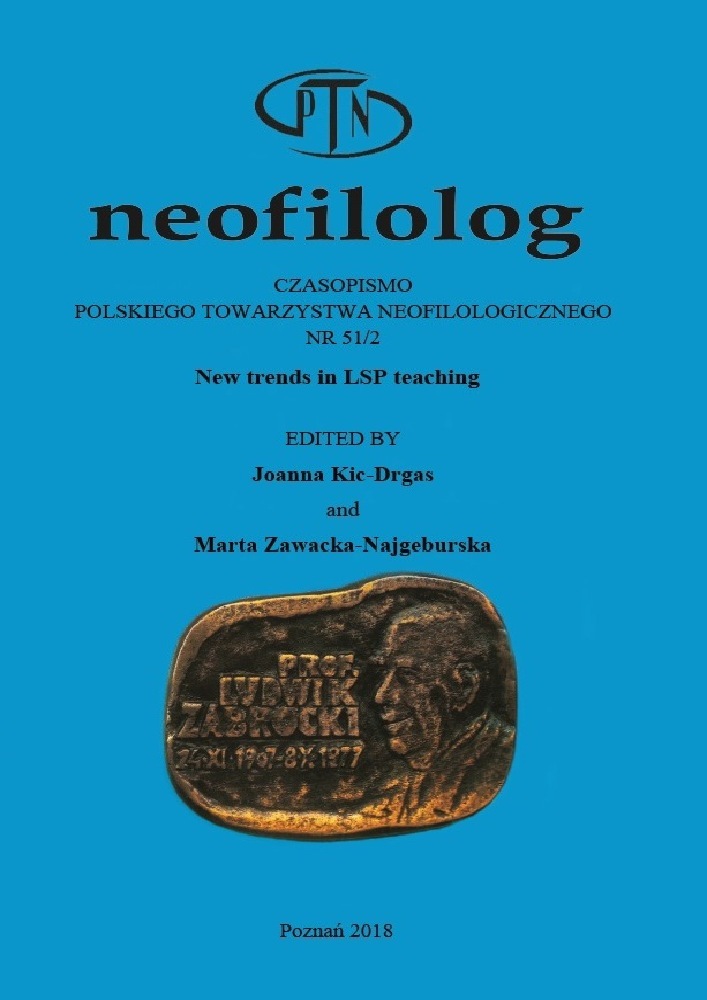Abstract
The use of independent and integrated speaking tasks represents a distinctive element of the TOEFL iBT speaking exam. Integrated tasks that involve synthesizing and summarizing information presented in reading and listening materials have the potential to generate new test preparation strategies. Language teachers, whether in schools or colleges, have started using Web 2.0. tools in order to prepare students for language exams. It is asserted that Web 2.0. tools support active and meaningful learning and help students to express themselves on a particular subject. This paper describes the use of Web 2.0. tools to simulate TOEFL iBT-style speaking exercises and improve the students’ test taking ability in speaking during a course for kindergarten teachers in Andychów. Web-based activities were also implemented to help students overcome their fear of speaking. Also discussed are the main problems encountered, both pedagogical and technical, and what was done to solve them. Student feedback from an end-of-the-semester survey and from qualitative interviews is shared. The survey study shows that the use of Web 2.0. tools was a key feature of exam preparation on this intensive course. It is agreed that speaking skills of students can be improved through careful implementation of Web 2.0. tools.
References
Anderson, P. (2007), What is Web 2.0? Ideas, technologies and implications for education. Online: http://www.ictliteracy.info/rf.pdf/Web2.0_research.pdf [access date: 4.2018].
Bailey, K. (1999), Washback in language testing (TOEFL Monograph Series 15). Princeton, NJ: Educational Testing Service.
Bryant, T. (2007), Games as an ideal learning environment. NITLE Transformations. Online: http://www.academia.edu/164496/Games_as_an_Ideal_Learning_Environment [access date: 4.2018].
Edwards, S., Bone J. (2012), Integrating peer assisted learning and eLearning: using innovative pedagogies to support learning and teaching in higher education settings (in) “Australian Journal of Teacher Education”, No 37. Online: http://dx.doi.org/10.14221/ajte.2012v37n5.4 [access date: 4.2018].
Goswami U., Bryant P. (2007), Children’s cognitive development and learning (Primary Review Research Survey 2/1a), Cambridge: University of Cambridge, Faculty of Education.
Greenhow, C., Robelia, B., Hughes, J. E. (2009), Learning, teaching, and scholarship in a digital age (in) “Educational Researcher”, No 38(4), pp. 246–259. Online: http://dx.doi.org/10.3102/0013189X09336671 [access date: 4.2018].
Greenhow C. (2011), Youth, learning, and social media (in) “Journal of Educational Computing Research”, No 45(2), pp. 139–146.
Kennewell S., Tanner H., Jones S., Beauchamp G. (2008), Analysing the use of interactive technology to implement interactive learning (in) “Journal of Computer Assisted Learning”, No. 24(1), pp. 61–73.
Kuh G.D. (2009), What student affairs professionals need to know about student engagement (in) “Journal of College Student Development”, No 50, pp. 683–706.
McLoughlin C., Lee M. (2008), Future learning landscapes: Transforming pedagogy through social software (in) “Innovate: Journal of Online Education”, No 4(5).
McLoughlin C., Lee M. J. W. (2007), Listen and learn: A systematic review of the evidence that podcasting supports learning in higher education (in) Montgomerie C., Seale J. (eds.), Proceedings of World Conference on Educational Multimedia, Hypermedia and Telecommunications. Chesapeake, VA: AAC, pp. 1669–1677.
Merchant G. (2009), Web 2.0, new literacies, and the idea of learning through participation (in) “English Learning: Practice and Critique”, No 8(3), p. 107.
Prenksy M. (2001), Digital natives, digital immigrants (in) “On the Horizon”, No 9(5), pp. 1–6.
Riley R., Wyatt R. (2009), Achieve TOEFL iBT: Test-preparation. London: Marshall Cavendish Education.
Selwyn N. (2009), Faceworking: Exploring students' education‐related use of "Facebook" (in) “Learning, Media and Technology”, No 34 (2), pp. 157‐174.
Song, L (2014), Has Web 2.0 revitalized informal learning? The relationship between Web 2.0 and informal learning (in) “Journal of Computer Assisted Learning”, No 30(6), pp. 511–533. Online: doi:http://dx.doi.org/10.1111/jcal.12056 [access date: 4.2018].
Walker A., White G. (2013), Technology enhanced language learning. Connecting theory and practice. Oxford: Oxford University Press.
Wesch M. (2008), A vision of students today (and what teachers must do). Online: http://blogs.britannica.com/2008/10/a-vision-of-students-today-what-teachers-must-do [access date: 4.2018].
Zhao F., Kemp L.J. (2012), Integrating Web 2.0-based informal learning with workplace training (in) “Educational Media International”, No 49 (3), pp. 231–245.
License
Copyright (c) 2018 Neofilolog

This work is licensed under a Creative Commons Attribution-NoDerivatives 4.0 International License.
Authors
Authors of texts accepted for publication in Neofilolog are required to complete, sign and return to the Editorial team’s office the Agreement for granting a royalty-free license to works with a commitment to grant a CC sub-license.
Under the agreement, the authors of the texts published in Neofilolog grant Adam Mickiewicz University in Poznań a non-exclusive, royalty-free license and authorize the use of Attribution-NoDerivatives 4.0 International (CC BY-ND 4.0) Creative Commons sub-license.
The authors retain the right to the free disposal of the work.
Users
Interested Internet users are entitled to use works that have been published in Neofilolog since 2017, under the following conditions:
▪ attribution – obligation to provide, together with the distributed work, information about the authorship, title, source (link to the original work, DOI) and the license itself.
▪ no derivatives – the work must be preserved in its original form. Without the author's consent, it is not possible to distribute the modified work in the form of translations, publications, etc.
Copyrights are reserved for all texts published since 2017.
Miscellaneous
Adam Mickiewicz University in Poznań retains the property right as a whole (layout, graphic form, title, cover design, logo etc.).

